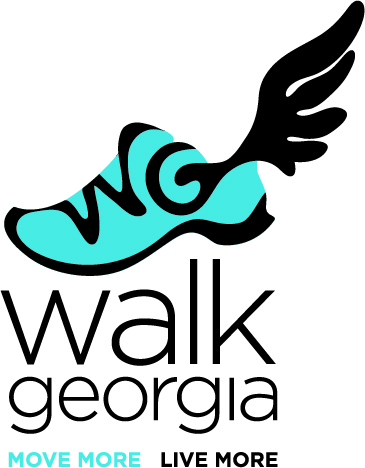Diabetes is a chronic disease that keeps your body from making energy from the food you eat. Diabetes develops when your body can’t make enough insulin, when the cells in your body can’t use insulin well, or both.
Diabetes is characterized by a symptom called hyperglycemia, which is high levels of glucose in the blood (the hyper- prefix means “excessive” or “above normal”). Diabetes affects people of all ages, and over time, consistently high blood glucose can lead to health problems such as heart disease, nerve damage, or loss of vision (Centers for Disease Control and Prevention, 2024).
To best understand diabetes, you first need to understand how your body converts food into energy.
- When you eat, the intestine breaks down carbohydrates into a type of sugar called glucose, which is the body’s primary energy source.
- The glucose enters the bloodstream after a meal, causing the level of blood glucose to rise.
- When your body senses a rise in blood glucose, your pancreas responds by making a hormone called insulin.
- If the body does not produce enough insulin or cannot use it effectively, the cells are unable to absorb glucose from the bloodstream. As a result, the cells signal that they are starving, despite the presence of glucose in the blood. In response, the liver releases stored glucose to provide energy, which further increases blood glucose levels.
- When insulin is present and functioning properly, it travels through the blood to your body’s cells and acts like a key that “unlocks” the cells. Once unlocked, glucose can move from the blood into the cells.
- Once the glucose is in the cell, it can be used to make energy for your body.
Type 1 Diabetes
Type 1 diabetes occurs when the pancreas does not produce insulin. This means that insulin is not available to unlock the cells. It is often diagnosed during childhood, but can also develop during adulthood.
If you have type 1 diabetes, your healthcare provider will prescribe insulin that you have to inject multiple times a day, or you will use a device called an insulin pump. If you have type 1 diabetes, you must also monitor your blood glucose levels and make healthy eating and physical activity choices (American Diabetes Association [ADA], n.d.-a).
Type 2 Diabetes
Type 2 diabetes is the most common kind of diabetes, making up 90% of all cases. When you have type 2 diabetes, your body still makes insulin, but your cells don’t respond to it properly. This lack of response is called insulin resistance. Your doctor may prescribe oral medications to help your body use insulin more effectively. Type 2 diabetes is often diagnosed during adulthood, but on certain occasions, it can develop in young people and children.
Sometimes, when you have type 2 diabetes, your pancreas stops making insulin. If this happens, your doctor will prescribe insulin injections or a pump. You may have to take both an oral medication and an insulin injection to adequately manage the glucose levels in your blood (ADA, n.d.-a).
Gestational Diabetes
Gestational diabetes is type 2 diabetes that develops during pregnancy, affecting 9% of pregnant individuals. To manage the glucose in your blood while keeping the fetus safe, insulin injections are usually used instead of pill medications. While gestational diabetes usually goes away after the baby is born, developing diabetes during pregnancy makes it more likely that you could develop type 2 diabetes later in life.
How Do I Know if I Have Diabetes?
Your doctor or healthcare provider uses several methods to diagnose diabetes. It typically requires more than one test, usually on a separate day from the first test, to confirm the diagnosis. Testing is conducted in a healthcare setting, such as a doctor’s office or laboratory. If your healthcare provider finds that your blood glucose levels are very high (known as hyperglycemia) or you show classic symptoms of high blood glucose along with one positive test, a second test may not be necessary for diagnosis.
Different tests can be used to diagnose high blood glucose. These tests include A1C, fasting plasma glucose, random plasma glucose, or the glucose tolerance test.
- An A1C test shows the average blood glucose over the past 2 to 3 months. The advantage of this test is that you don’t have to fast or drink anything. An A1C result of 6.5 or higher on two different testing days may indicate that you have diabetes.
- A fasting plasma glucose test measures the amount of sugar in your blood when it is expected to be at its lowest. Blood glucose is typically at its lowest when you haven’t had anything to eat or drink (except water) for at least 8 hr. This test is usually conducted first thing in the morning, before you have eaten breakfast. A result of 126 or higher on two separate testing days may indicate a diabetes diagnosis.
- An oral glucose tolerance test is a 2-hr test that checks your blood glucose levels before and after you drink a very sweet drink containing a specific amount of sugar. It tells the doctor how your body is processing sugar. A glucose tolerance test of 200 or more usually suggests a diagnosis of diabetes.
- A random plasma glucose test is a random blood test done at any time of the day. It is usually used when someone is experiencing severe diabetes symptoms. Frequently, this test is performed along with other tests before a diagnosis of diabetes is made.
How Do I Know if I Have High Blood Glucose?
Many people with diabetes don’t realize their blood sugar is too high. It can build up slowly and may not cause symptoms right away. But over time, high blood sugar can lead to serious health problems.
Common Symptoms of High Blood Sugar
- Sudden or unexplained weight loss
- Feeling very hungry, even after eating
- Feeling very thirsty all the time
- Needing to urinate more often than usual
- Nausea and vomiting
- Feeling tired or low on energy
You must talk to your healthcare provider if you notice any signs of high blood glucose. They can also help you manage low blood glucose and its associated symptoms.
How Do I Know if I Have Low Blood Glucose?
Low blood glucose, or hypoglycemia (the prefix hypo- means “below normal”), can come on quickly and may feel different in each person. It usually happens when your blood glucose drops below 70 mg/dl, and the symptoms are caused by the release of epinephrine, also known as the “fight or flight” hormone. This hormone is your body’s way of alerting that something is wrong, and you must act quickly to restore blood glucose to the normal range.
Common Symptoms of Low Blood Sugar
- Feeling shaky or jittery
- Sweating, chills, or clamminess
- Fast heartbeat or palpitations
- Feeling nervous or anxious
- Irritability or mood changes
- Dizziness or lightheadedness
- Hunger or nausea
- Blurred vision
- Tingling or numbness in the lips, tongue, or cheeks
- Weakness or fatigue
- Confusion or trouble concentrating
- Headaches
- Clumsiness or poor coordination
- Nightmares or crying out during sleep
In severe cases, low blood sugar can lead to seizures or unconsciousness.
Important Tip
Some symptoms of hyperglycemia and hypoglycemia are similar, such as weakness and nausea; it is important to check blood glucose levels to treat high or low blood glucose appropriately. The only way to know for sure if your blood sugar is high or low is to check it using a glucose meter or continuous glucose monitor (ADA, n.d.-b).
How Can I Take Control of My Life After Being Diagnosed With Diabetes?
- Eat nutritious foods: Focus on meals with nonstarchy vegetables, whole grains, lean proteins, and foods low in added sugar. Try to eat at regular, consistent times each day.
- Stay active: Regular physical activity, such as walking, swimming, or biking, can help lower your blood sugar and boost your energy.
- Follow your treatment plan: Take your medications as prescribed and check your blood sugar as recommended (Mayo Clinic Staff, 2024).
While diabetes doesn’t go away, it can be managed. You can live a long, active, and healthy life with the proper care.
References
American Diabetes Association. (n.d.-a). Newly diagnosed with diabetes. Retrieved June 24, 2025, from https://diabetes.org/living-with-diabetes/newly-diagnosed
American Diabetes Association. (n.d.-b). Signs, symptoms, and treatment for hypoglycemia (low blood glucose). Retrieved June 27, 2025, from https://diabetes.org/living-with-diabetes/hypoglycemia-low-blood-glucose/symptoms-treatment
Centers for Disease Control and Prevention. (2024, May 15). National diabetes statistics report. https://www.cdc.gov/diabetes/php/data-research/
Mayo Clinic Staff. (2024, January 6). Diabetes management: How lifestyle and daily routine affect blood sugar. Mayo Clinic. Retrieved June 26, 2025, from https://www.mayoclinic.org/diseases-conditions/diabetes/in-depth/diabetes-management/art-20047963









